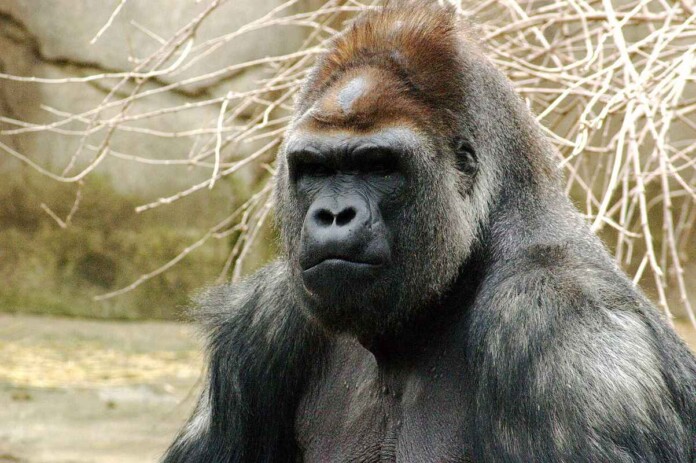The thunderous display of a gorilla beating its chest is indeed a remarkable spectacle, both visually and audibly. Yet, recent research, drawing upon years of observation of mountain gorillas, reveals a deeper complexity to this iconic behavior.
Traditionally, popular culture, from cinematic depictions like King Kong to gaming encounters with characters like Donkey Kong, has portrayed male gorillas pounding their chests with their fists, often interpreted as a sign of challenge or triumph.
However, new insights challenge this conventional understanding. Edward Wright, a primatologist at the Max Planck Institute, conducted extensive observations from 2014 to 2016, studying 500 chest beats performed by 25 different silverback mountain gorillas in Rwanda’s national parks.
Utilizing acoustic monitoring equipment, Wright and his team discovered that chest thumping serves as an honest display of body size. This suggests several key aspects of gorilla social dynamics. Notably, larger gorillas produced lower-frequency sounds that could travel considerable distances, potentially deterring rival males from encroaching on their social group.
The mechanism behind this phenomenon lies in the reverberation of air sacs beneath the gorilla’s larynx, generating a sound whose depth corresponds to the male’s size and dominance. This broadcast of dominance serves as a deterrent to potential challengers while also acting as a unique identifier for members within the dominant male’s group.
Interestingly, despite a correlation between sound depth and body size, the frequency of chest thumping instances did not necessarily increase with the dominance of the male. This suggests that chest beating may serve to de-escalate conflicts rather than incite them.
Intriguingly, smaller males respond with their own chest thumps, albeit at higher frequencies, potentially signaling their presence while acknowledging their inferiority in physical prowess. This nuanced communication helps to mitigate the risk of physical confrontations, even for dominant males.
The impact of chest thumping on female gorillas remains less understood, although initial observations suggest a correlation between chest beating frequency and the reproductive status of females.
Future studies aim to delve deeper into how the chest thumping of dominant males influences female behavior, particularly during estrus cycles, and whether it plays a role in reproductive success by attracting females from neighboring social groups.
